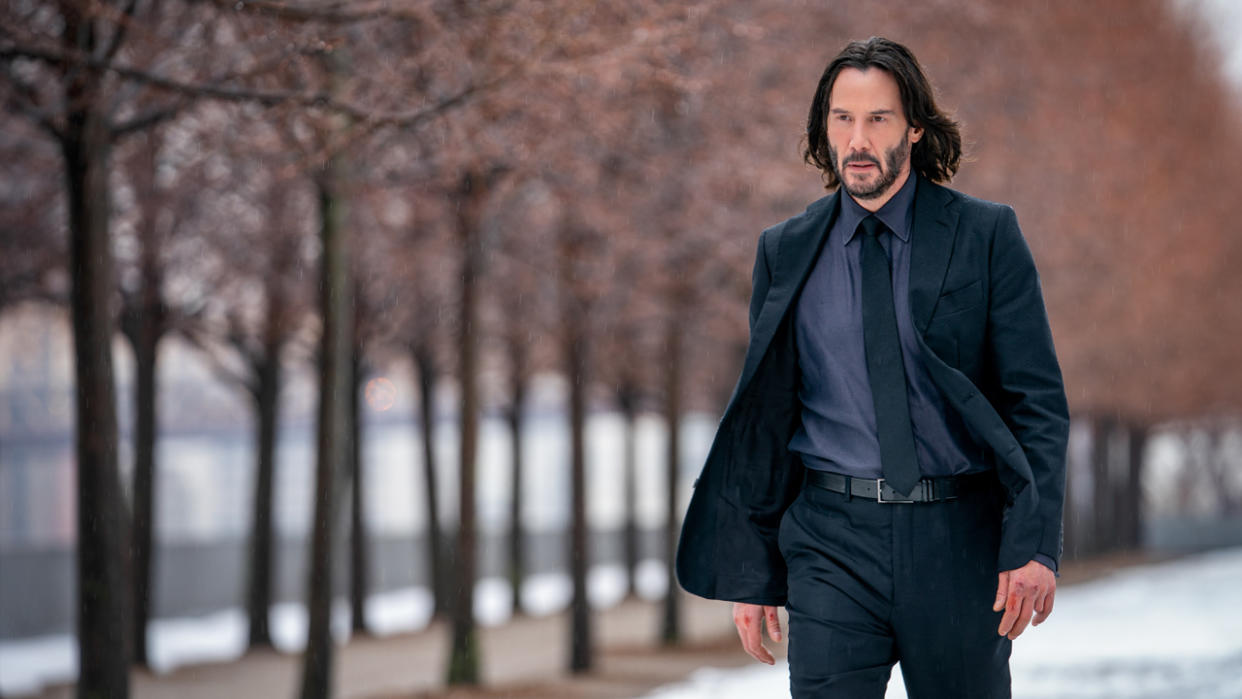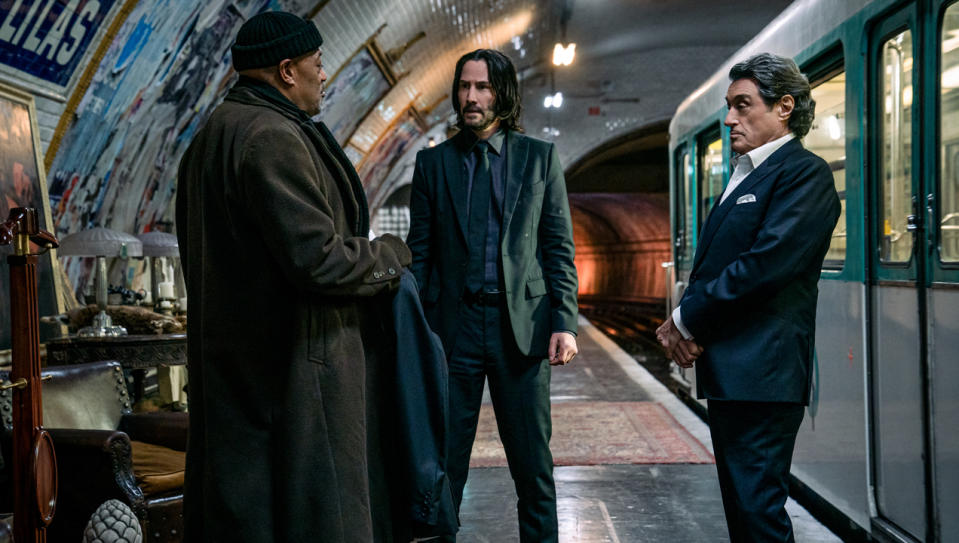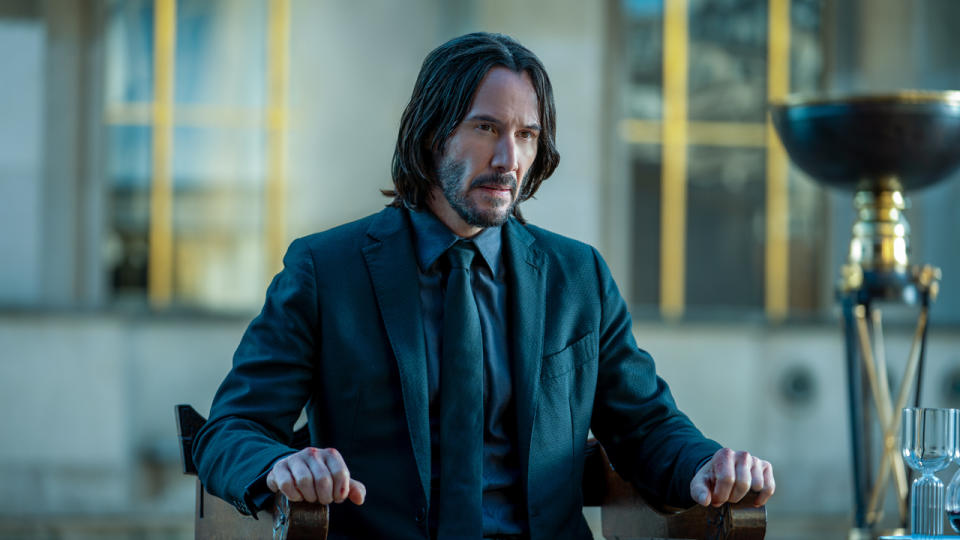Why John Wick: Chapter 4 Had To Go With That Ending, According To The Director

SPOILER WARNING: The following article contains major spoilers for John Wick: Chapter 4. If you have not yet seen the film, proceed at your own risk!
In the coming years, the John Wick franchise will be widening its scope. Since 2014, we’ve watched the titular character kill a whole lot of people on various missions of vengeance, but before long, fans will be able to watch Ana de Armas take center stage in the John Wick spinoff film Ballerina and witness a prequel story in the form of the Peacock original series The Continental. There’s a big future ahead for the continuity… but all signs point to Keanu Reeves’ killer protagonist not being a part of it.
In recent weeks, the star has downplayed things when asked about a John Wick: Chapter 5, and the ending of John Wick: Chapter 4 is why. After dozens if not hundreds of battles, the revenge-hungry assassin has been put to rest. It’s a shock for any fan who expected that these movies would continue on for years, but I recently had the opportunity to interview director Chad Stahelski, and he explained why the film had to go with its big and emotional conclusion.

What Happens At The End Of John Wick: Chapter 4
Following his battles with Parisian assassins trying to stop him from making it to his duel on time, John Wick (Keanu Reeves) arrives at the Basilica of Sacré Coeur de Montmartre – albeit with the help of his friend/opponent, Caine (Donnie Yen). The two men square off in the gunfight according to the rules, moving a total of 20 paces closer to each other with each round that doesn’t result in a kill shot. When they are only 20 paces away from one another, Caine shoots John in the side, bringing him to his knees.
Greedily wanting to kill John himself, the Marquis (Bill Skarsgård) claims the coup de grace shot, telling Caine with witnesses that he and his daughter are free from the High Table. What the Marquis doesn’t realize is that John took a bullet from Caine without firing one himself, and when the central antagonist takes Caine’s gun, John is within his right to shoot him (and he does while uttering one word: “consequences.”)
The Harbinger (Clancy Brown) declares John free of his obligation to the High Table, and Winston (Ian McShane) is reinstated as the manager of the New York Continental. John says his goodbyes to Caine, and while heavily bleeding, goes over to a set of stairs to sit down. He asks Winston to take him home, and Winston says, “Of course.”
After a flashback memory of John’s wife, Helen (Bridget Moynahan), we see Winston and The Bowery King (Laurence Fishburne) back in New York at a cemetery standing over the graves of Helen Wick and John Wick, whose headstone, as requested, reads “Loving Husband.”

John Wick: Chapter 4 Director Chad Stahelski Explains Why The Movie Had To End With John Wick’s Death
When I had the opportunity to conduct an extended, spoiler-filled interview with Chad Stahelski earlier this month, the very first thing I asked about was that surprise ending and the death of John Wick. It’s a wild thing to see the character killed off at the height of his popularity, but the filmmaker explained that it was basically the whole point of making John Wick: Chapter 4.
He explained that every installment of the John Wick series has been dictated by a set of guidelines, and one of the most important ones that he and star Reeves were insistent on following was making sure that every sequel had an answer to “Why?” Said Stahelski,
As we started on the first Wick, we had this huge whiteboard of everything we love about action movies and everything we hate, and we still have that same identical board up. 'Don't bring characters just for a gag.' 'Don't just do exposition.' 'Don't fall into that full tell the audience thing.' 'Don't answer all the questions.' 'Don't do the typical deus ex machina.' Just have this theme and own it. And one of our things is 'Always have a why.' If you don't have a why, don't do the movie. It shouldn't be for any other reason than we want to do it and there's a why.
After making the first three movies without a specific plan, they were humbled to get the greenlight by Lionsgate to make John Wick: Chapter 4 – but what they realized with the offer was that it would have to be the sequel that properly wrapped up the eponymous hero’s story:
We were thinking, 'Well, we did three movies and we didn't really have a plan.' It's one at a time, one at a time. And then we were asked to do number four, which is always a kind of a blessing… And then we're like, 'Ok, well why should we do it?' And we just look back at the other three, and the only reason we could think of is to tie together the three that we had done and let's satisfy everything. If you don't come full circle, if you don't come to some conclusion, then you're just kind of stringing the audience along and you're seeing how long you can milk it.
As mentioned, the franchise is currently at the height of its popularity in pop culture, and Stahelski suggested that the pitched approach for Chapter 4 was met with some resistance from executives at Lionsgate. But, he had a specific vision for the sequel tied into what was originally going to be the film’s subtitle a la John Wick: Chapter 3 – Parabellum. He added,
You can imagine a lot of people's reaction; we'd go, 'John's gotta die. That's the whole reason to do it.' The original working title of the movie was Hagakure. It's this Japanese treatise. It's a book from the 16th century that was about the code of ethics of Samurai and how to prepare for dying; the way of dying kind of thing. And that's where the whole thing started. If we don't conclude John or John Wick's – depending on obviously it's a myth with dichotomies and all that stuff – but if you don't end the journey, then why do the show?
Stahelski pointed to the ambiguity that exists in the ending of Chapter 4 (we don’t actually see John die/there isn’t a body, so perhaps “John Wick” is dead while John lives on), but also emphasized that the ending isn’t meant to be the point of the journey:
It's a business, so people are like, 'You're gonna kill off your lead franchise character, huh?' We're like, 'Yeah! That's what we're gonna do.' But we wanted to do it in a way that was satisfying. This isn't meant to be a movie; it's meant to be a myth. It's a campfire tale. So if you don't have that conclusive thing... And is it definitive? No. It's like, who died? Like, if I was telling you this as a story like a modern day Tolkien thing, you don't look at the character, but look at the moral of the story. Does John die? Does John Wick die? Does he come to conclusion? Does he find peace? And what's the moral of the story? So we kind of looked at it more like that, and that's how we got it.
Featuring a stellar cast of talented actors, John Wick: Chapter 4 is now playing in theaters everywhere. For more about the film, you can read Chad Stahelski’s explanation of the post-credits scene, and you can check out our 2023 movie release calendar to learn about all of the big new titles coming out in the months ahead.

